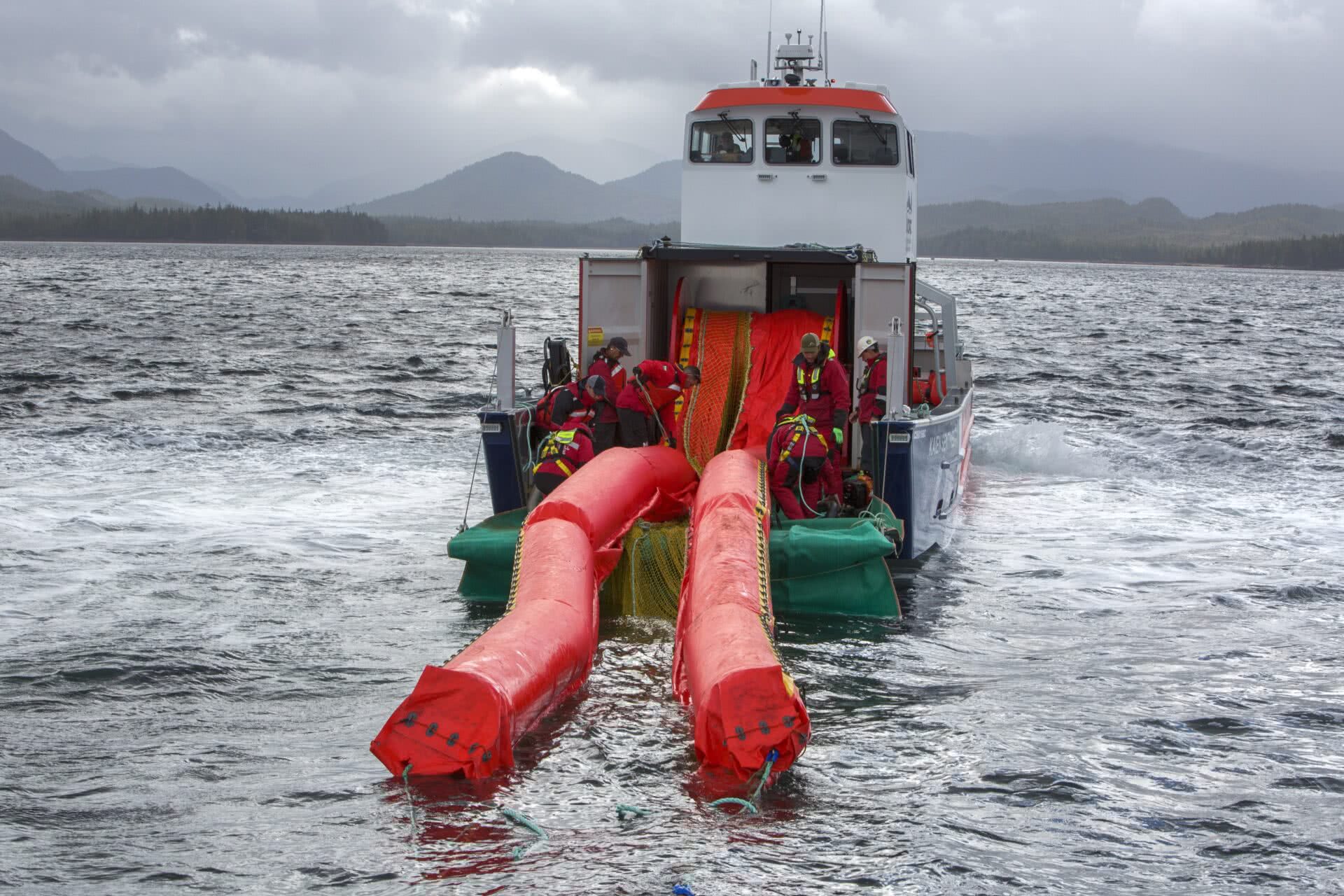As part of the Oceans Protection Plan, the federal government is strengthening Canada’s oil spill preparedness and response regime. Their strengthening process includes reviewing requirements for the response organizations that provide spill response services in Canada.
It has been 23 years since the response regime was established and overall the regime has served Canada well. The regime has dramatically decreased the frequency and severity of spills. It has significantly improved preparedness and response. However, there are always areas for continuous improvement. With the introduction of the Oceans Protection Plan and a renewed focus on oil spill response and preparedness, WCMRC agrees it is time to review current regulations and the planning standards that govern Canada’s marine response organizations.
In support of the review, WCMRC has submitted to Transport Canada our thoughts on improvements for the regime. Below is a summary of our response to Transport Canada’s five enhancement themes and an overview of other gaps within the regime that WCMRC has identified.
Recognizing local conditions and risks
WCMRC recognizes that there are regional differences and local conditions that may impact risks. We agree that a national “one-size-fits-all” approach to response is not appropriate for all areas across Canada. Even regionally, different coastal conditions and vessel traffic patterns may influence response capability. WCMRC’s geographic area of response includes 27,000 km of coastline with a wide range of environmental conditions and unique challenges.
WCMRC supports a regional approach to response planning that is based on strong science and risk assessments that consider local risks and conditions. The new Regional Response Planning process is an excellent initiative and we hope Transport Canada will continue to work with the Canadian Coast Guard, the provinces, municipalities, First Nations, response organizations and industry to ensure evidence-based decision making becomes an important part of the regime.
Strengthening response times and capacity
Transport Canada’s Response Organization Standards currently require WCMRC to have the capacity to clean-up a 10,000 tonne spill in 10 days. Tiered response times are also defined in the planning standards. For example, within the Port of Vancouver WCMRC is required to be on scene in six hours or less. WCMRC exceeds these planning standards at every level. WCMRC’s average response time in the Lower Mainland over the last 10 years is 60 minutes.
WCMRC believes that these planning standards are out of date. They were developed over 20 years ago – risks, conditions, vessel traffic and response organization capacity have all changed. WCMRC supports a review of the response standards that is linked to regional risks.
Planning for cascading resources
All forms of emergency response follow the principle of cascading resources for large scale incidents. WCMRC supports the international three-tiered approach to spill response planning. To support the cascading principle of response, WCMRC currently has mutual aid agreements in place to supplement our resident capacity if needed.
Improving the certification process
WCMRC supports introducing more transparency to all areas of spill response planning, including the certification process. We currently post our Marine Spill Response Plan on our website and have a dedicated public portal for all of our Geographic Response Strategies. For the certification process, transparency might be achieved through outreach programs and open invitations of interested groups to response organization exercises and equipment demonstrations.
Improving public awareness and participation
WCMRC’s Coastal Response Program encourages community participation in spill response. Community input helps us to identify and understand local sensitivities. We welcome community participation through our Vessel of Opportunity program. Communities can also host response equipment, receive training and education.
However, WCMRC recognizes there are still significant gaps in public awareness and participation in spill response. WCMRC would support a collaborative program between response organizations, industry and government to increase public awareness and participation.
Gaps within the regime
In addition to the above themes, WCMRC has identified several other areas where we feel there are gaps within the regime.
- Non Ship-Source Spills: Under the current regime, response organizations are required by the Canada Shipping Act to respond to ship-source spills. When responding to ship-source spills, responders and their contractors receive responder immunity. However, oil spills are not limited to ships. WCMRC would like to see a provision for “umbrella legislation” to cover responders and their contractors when they are responding to non ship-source spills.
- Ship-Source Oil Pollution Fund (SOPF): Access to SOPF funds has been a challenge for many groups, including municipalities and the Canadian Coast Guard. Response organizations have limited access to the fund and only after all other avenues have been exhausted. WCMRC supports modernizing how the SOPF operates and the removal of per-incident limits.
- Regime Funding Fee Structure: With the move to evidence-based decision making, Transport Canada should also consider applying the same principle to the fee structure that funds the regime. Today, ships within WCMRC’s area of response contribute less than 10 per cent to preparedness funding, yet make up the majority of the membership and the vast majority of our responses. A review of the existing funding structure should also be flexible and allow for future changes to the risks on Canada’s coasts.
In summary, WCMRC strongly supports the review and strengthening of Canada’s spill preparedness and response regime. We believe changes should be evidence-based and collaborative. We look forward to working with Transport Canada and all our other spill response partners on improving prevention and response for all of Canada’s coasts and oceans.

